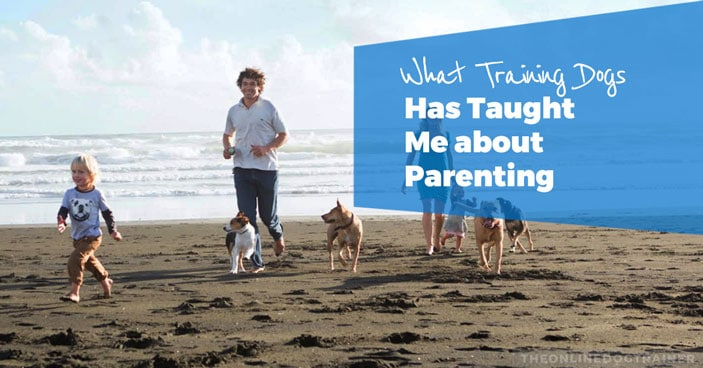
Have you ever looked at your dog, then at your child, and thought to yourself, “I wonder how similar raising a children is to training a dog?”
I have!
In fact, after a decade of training over 3,000 dogs, owning 4 dogs, and having two human children of my own, I ended up writing a book called “What The Dogs Taught Me About Being A Parent,” which is available for purchase on Amazon.
Or if you’re interested, I also have an audiobook that you can grab on my website that is read by me and is packed with lots of fun stories (it's cheaper too).
To give you a taste of how dog parenting and human parenting are similar and different, I’m sharing a few key points from my book with you today.
Without further ado, let’s get straight into it and begin with the similarities…
1. The Power of The Time Out
The first similarity (in no particular order) between disciplining a dog and a child is the power of time out.
When you put your child in time out, it’s not about shouting at them, scaring them and slamming the door. It’s about calmly placing them in a place where they can just think about the directions the were given that they did not follow..
It also gives you – the parent – a chance to settle down so you don’t lose your temper.
From personal experience, I’ve discovered that it’s best to leave a child in time out only for a few minutes. That being said, you also don’t want to let a child out of time out when he or she is still screaming and yelling.
Believe it or not, the same is true for dogs.
When a dog is too wired up or has done something naughty, it’s best to place him in a safe and secure spot, like a crate or bedroom, where he can settle down and be separated from what’s causing him to act out.
Screaming and yelling at a dog will only do more harm, just like yelling at a child will only cause the child to become more upset.
After a few minutes of quiet time in time out, you can let your dog out and see if he’s settled down enough to listen to your instruction.
I promise, using the time out technique will help your dog understand that his behavior is not desirable and will teach him in a calm and peaceful manner how you expect him to behave.
2. Don’t Play the Blame Game
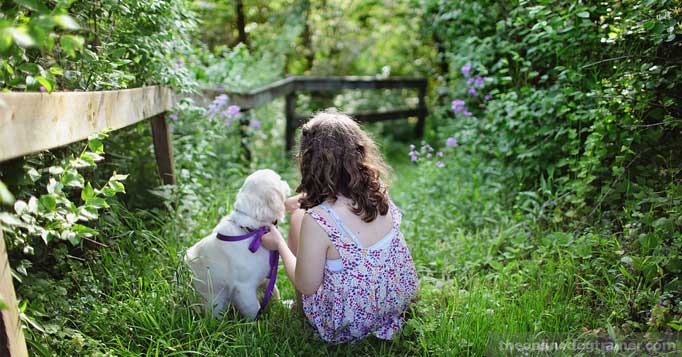
When your dog is misbehaving, do you blame the dog?
And when your child is misbehaving, is it really your child’s fault?
Do you play the blame game, or do you analyze the situation?
I’m not directing this to you personally, but I ask because it’s common for both human parents and dog parents to automatically blame the child or the dog for bad behavior – when the behavior may actually stem from something you’re provoking, thinking or even feeling.
Think of it this way…
If your eating meat and potatoes on the couch and your dog decides to try his luck and climbs up with you where he immediately receives a couple of potatoes and piece of yummy meat from you what have you done? Well you’ve basically taught him that all he needs to do is jump to get food that he wants is jump up and beg.
Now, let’s say you have guests come over and you are enjoying dessert in the living room. Mr. Bones decides he’d like a bite so he jumps up in an excited way on one of your guests causing her to drop her dessert on the floor.
The immediate reaction is probably that you’re going to yell at Mr. Bones for being bad, when in fact he’s not being bad at all. You taught him that behavior. And if you never would have allowed him to share snacks with you on the couch, this incident probably wouldn’t have happened in the first place.
The same goes for kids.
If you’ve allowed your daughter (or son!) to get away with eating ice cream for dinner because she cried and screamed, you’ve trained her to get what she wants by throwing a tantrum.
It’s not until your action changes that her behavior will also change.
Knowing this is a root cause of a lot of behavior problems, it’s forced me to stop automatically blaming my child or dog for the behavior that’s happening and instead analyze the situation.
Rather than me saying, “Hey, the problem is my kid,” I now ask, “What is it that I can change, which will make all the difference?”
So I’ve realized that when I change what I’m doing, my dogs and my children's behavior changes.
That means I’m both the problem and I’m the solution. When I change what I’m doing, my children change their behavior too. So, it’s really, really interesting that on the deepest level, it’s actually changing how we behave, how we act.
3. Toilet Training
Here’s one more example…toilet training.
Toilet training with puppies is similar to raising children. The truth is that the most important thing with potty training children or dogs is that you are responsible, not your puppy or child.
It’s your job to remind your puppy when he needs to go. You have to take him to the place in the yard you want him to do his business. And you have to reward him when they get it right.
And if they get it wrong – he pee’s on your floor – maybe you need to tighten up on how often you take him and that sort of thing.
Same with your child. You need to be responsible for taking your kid to the bathroom and motivating him. If you ignore him all day when he’s still learning, it should be no surprise that you’ll walk right into a mess…after all, he really doesn’t know any better at such a young age.
4. Mealtime Meltdowns
The fourth similarity between raising dogs and children has to do with feeding.
Let’s start with dogs…
As a pet parent, you certainly want to make sure your dog is eating and is healthy. But, what happens when Sparky decides to skip a meal.
Most of us panic. And in an attempt to get Sparky to eat, we throw chicken, veggies, steak, etc into his bowl. Most likely, Sparky will now eat his food.
This sounds like great news, but sadly, you just accidentally taught Sparky a bad behavior.
The next time mealtime rolls around and it’s just kibble in his bowl, Sparky is going to be disappointed…after all the previous day he got fresh meats and veggies.
So what is he going to do?
Simple…not eat his food knowing that you’re holding out on the good stuff.
The same goes for kids.
If you let them become too fussy when it comes to the foods they get for mealtime, eventually they will end up just wanting to eat chocolate, coco pop chocolate-coated crispies, and ice cream – all the nice (bad) stuff.
This will only lead to tantrums and meltdowns the next time you try and get Sally to eat a vegetable or a normal dinner.
Here’s the thing…unless there is an underlying medical condition with your dog or your child, he or she will eventually get hungry enough and will eat what is served. But don’t just starting giving them what they demand!
Easy as that.
Note: If your dog stops eating for over 48 hours, he or she may actually be ill. Please take him or her to the nearest vet. And if your child stops eating for 24 hours then of course call a doctor.
5. Rewards
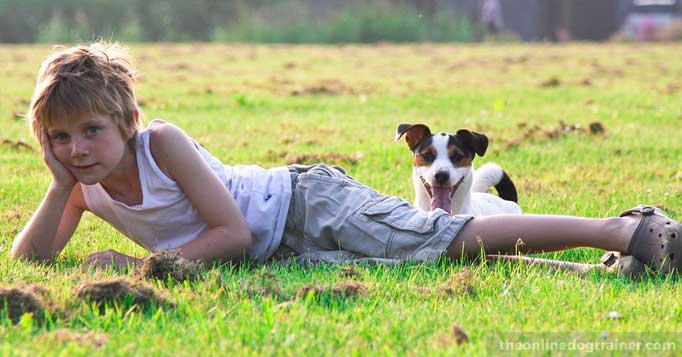
This idea is based on the concept that “Nothing in life is free” (or it will lose its value.)
For example, you can’t give your child 20 dollars of pocket money for doing nothing, then later on in the day ask him to help you wash the car for five dollars. Why would he work for five dollars when you already gave him 20 dollars for free?
It’s exactly same with your dog or your puppy.
Treat training is a great example…
You can’t give your puppy all these tasty little treats and then expect her to come running to you at the park for one little tasty liver treat. Your pup is going to say, “Well, hang on. I get these all the time for free. Why should I do a trick for them when I don’t have to?”
This is exactly why you need to use rewards for both kids and dogs sparingly.
It’s all about motivation. You do the work, then you will get the reward.
6. Energy
Have you ever woken up in a grumpy bad mood for some reason in the morning and noticed your child picks up your energy and becomes grumpy also for no reason?
It's amazing how quickly children can pick up on energy.
The good news…children pick up on positive calm energy, too!
If you are relaxed and calm and patient, it’s amazing how that rubs off on children. Over time, if you consistently give off good energy, they will pick up on those energies, continuously, and will become happier and more peaceful kids.
Dogs are exactly the same. They soak up the energy which they marinate in. That’s right, I often think of my kids and my dogs like sponges!
You often find that maybe highly stressed people who are very jumpy and noisy and very loud, often have dogs with similar traits. And people who are very chilled out, very relaxed, very laid back will often have more relaxed, easy going dogs..
That’s the energetic side of things. It’s almost impossible for dogs not to pick up on the emotions, the energy, or thoughts or feelings – the same as children do.
Not always easy for us to face up to but dogs really do reflect us in many ways.
The Big Difference Between Dogs and Children
Now that we’ve covered a handful of the similarities between children and dogs that I cover in my book, I think it’s very important to cover the one major difference.
As much as I love my dogs, it’s not respecting them when I say, “oh they are just like us.” It’s a bit of an insult in many ways because they are not just like us.
In fact, they have many facets and abilities and skills that we do not have. The sense of smell, the sense of energy in being able to pick up on our thoughts and they are far more in tune with instinct and intuitions.
So what’s the major difference we need to be aware of as pet parents? Here it goes…
If you want to understand the dog you have to think like a dog. What I mean by that is that dog psychology and human psychology is very different.
Dogs evolved from wolves and they learn, understand, and obey as leaders and followers. The way you gain the respect of a dog, the way you win their mind, and the way you get them to choose to follow you is very different from the way a human would do it.
When you understand what’s important to a dog and how you get dog to follow you and listen to you, then you’re onto something.
And that’s the huge difference. For example:
- You could give your dog a bed made out of a thousand $100 bills to sleep on, or some newspaper and your dog wouldn’t care.
- You can give her a ride in your Ferrari or a clapped out old wreck of a car and your dog would love you just the same.
- You can buy your dog brand new smart phone, to play with but they would rather a little cannon bone to chew.
Dogs are different and we need to respect them for that and see the world through their eyes, what’s important to them and what not.
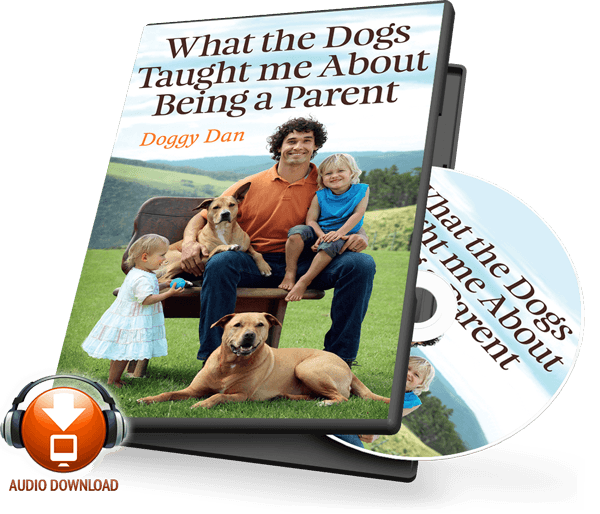 If you’re interested in learning more about “how to think like a dog” I encourage you to check out my book, “What The Dogs Taught Me About Being A Parent”.
If you’re interested in learning more about “how to think like a dog” I encourage you to check out my book, “What The Dogs Taught Me About Being A Parent”.
You can get it on Amazon as a kindle book or you can get it as an audible audio download right here.
Enjoy!

~Doggy Dan 🙂




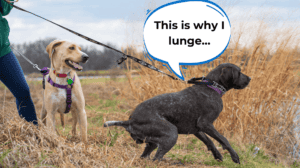
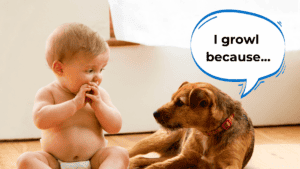
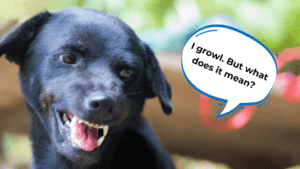

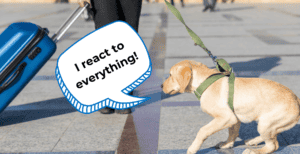
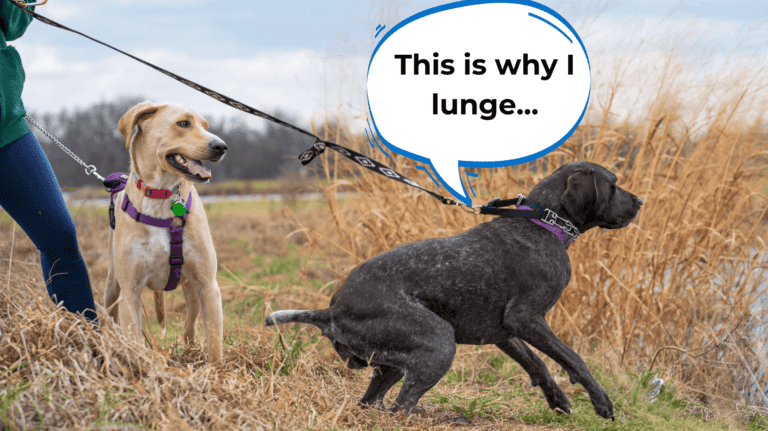
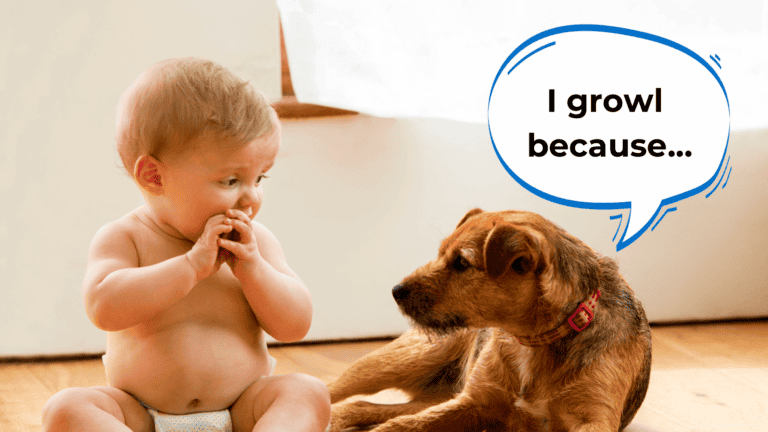
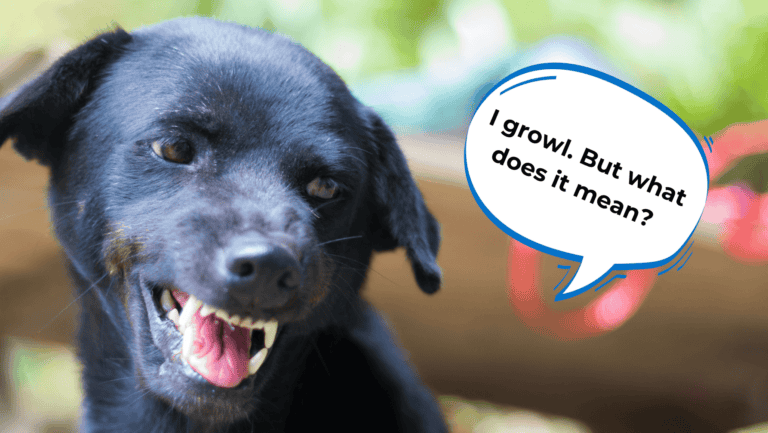

2 Responses
This article is incredibly insightful! The step-by-step guidance and practical tips provided are easy to follow and have already made a noticeable difference in my dog’s behavior. Thank you for sharing such valuable information. Highly recommended for all dog owners!”
You’re very welcome